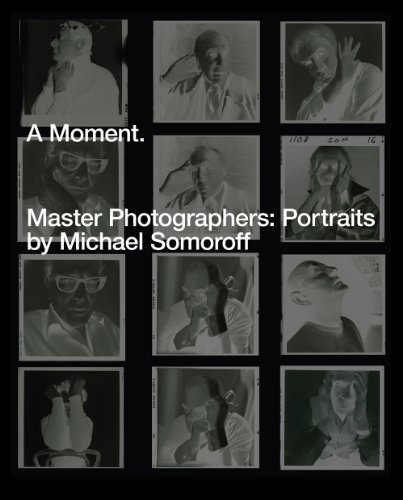A portrait of André Kertész
Paris, France 1982
I had grown up with the images of André Kertész, since my father was a great admirer of his work. They both were regular contributors to the same Condé Nast magazines in the 50’s. André photographing people’s homes as well as celebrities, while my father photographed still lifes and fashion. The two men admired one another and my father would often speak of André’s photography and, in particular, his “private work” as a source of inspiration. So, he became one of my great heroes.
It was so natural, then, for me to reach out to Andre in my early 20s for advice and guidance. After all, I was living on 13th Street, right off Sixth Avenue and just close by was André, living on Fifth Avenue overlooking Washington Square Park. Meanwhile, on 7th Avenue, just above Greenwich Street, was a small shop that sold antiques and trinkets. André would visit regularly to pick up left-over pieces of crystal chandeliers and geometrically cut shapes of crystal glass which he would buy by the handful to photograph with an SX-70 Polaroid camera. I would bump into André regularly when I was visiting Lou[is Faurer]. I would follow André around, we would chat and I’d carry something for him. He was quite frail at the time, yet remained very strong-minded and had a real will to continue to work. We had a lot of fun talking about still life photography and light and natural light as it pertained to his crystal photographs.
I then got caught up in my own career and the next thing, I was living in Europe. Several years went by and I heard André was coming to Paris. He came quite regularly. I phoned him and explained that I wanted to do his portrait and anyway, it would be nice to see each other again after our brief hiatus. He happily agreed and I met him at his hotel. I showed up with a French beret, a bag of camera equipment and my tilt-all tripod. We hung out in André’s room talking about photography and Lou[is Faurer] in New York. The resulting photographs—the contact sheet which you see here, shows us hanging out on his balcony, overlooking a small courtyard.
His hotel was not far from my Paris landmark—the Notre-Dame Cathedral. We did his portrait in the church gardens. It was an overcast fall day, not unlike the day I had photographed Robert Doisneau. The churchyard was not far from the hotel. While walking there, André mentioned the huge oak tree that greeted us as we entered the Gothic terraces of the church. He thought it would be a perfect location since he was keenly aware of my own portrait influences and even remarked that the background would be one that I would like—it was very [Irving] Penn-ish.
André sat on a ledge in front of an old stone wall and light poured in from the left. It was almost like photographing in a cave. It was a perfect, side-lit, classical light. André liked the portrait very much.
André was very talkative that day. As he spoke, I kept photographing. He seemed lonely and frail, having lost his wife. He reflected on how much he missed her. He was very reflective. I thought to myself that it seemed he didn’t have much longer to be with us.
In fact, he did die shortly thereafter. Looking back on the contact sheets, I realize I was able to capture a wide range of André’s passionate dialogue on both photography and life. The shooting went on for a couple of hours. I photographed a lot.
When we departed, we went in opposite directions. As André was leaving, he was passing under the huge oak tree—that same one which greeted us at the start. I pulled out my Leica and captured the last instant of our session. That was the last time I saw André.
—Michael Somoroff
A Moment. Master Photographers: Portraits by Michael Somoroff
by Michael Somoroff
Publisher: Damiani
Hardcover: 118 pages




